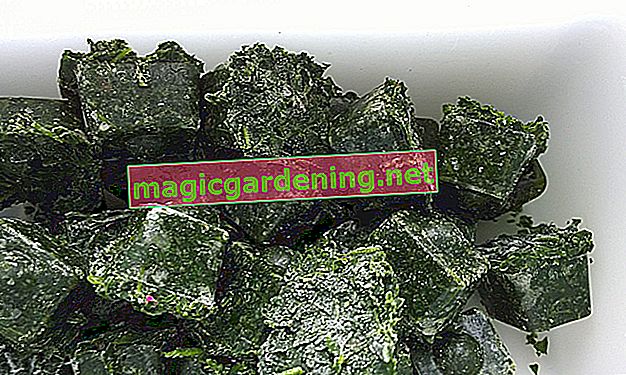
Preventive measures
Unfortunately, once it has broken out, frizziness cannot be treated effectively. In addition, according to the current status (June 2015), only two pesticides are permitted for domestic use; there are significantly more in commercial peach cultivation. Therefore, you should focus more on prevention, which can look like this:
- Above all, plant hardy peach varieties.
- In general, white fleshed varieties are less sensitive than yellow fleshed varieties.
- The pathogen mainly spreads when it rains, so you should plant your peach tree in a place that is as protected as possible.
- A location with a roof or on the side of the house away from the rain would be particularly suitable.
- Prune your peach tree regularly and create a light crown.
also read
- Peach Red Haven - yellow fleshed peach with a high yield
- Combating peach curl disease
- Peach Suncrest - the golden yellow one
Preventive injections
You can also - especially in the case of an infestation in the previous year, as the fungus hibernates on the tree - spray with a herbal tonic in February / March at the latest and thus significantly reduce the risk of infection. Spraying takes place as soon as it is warmer than 10 ° C for several days in a row, which can also happen in December. Inject the organic plant tonic Neudo-Vital Fruit-Fungus Protection when the buds start to swell. The treatment should take place three to four times with an interval of about three weeks. The entire crown should be treated.
Duaxo Universal Mushroom Free is the only approved chemical
Duaxo Universal mushroom-free is the only plant protection product that is approved for the home garden. This should also be sprayed before the buds burst, if possible three times in a row at an interval of 10 days. However, the following precautionary measures must be observed:
- Wear protective clothing (old clothing, rubber boots, gloves) when spraying.
- Put on protective goggles.
- Don't work against the wind. Do not spray at all in stronger winds.
- Do not smoke, eat or drink while spraying.
- Never blow out clogged spray nozzles with your mouth.
- Wash thoroughly after work.
- Do not dispose of spray residues via the sewage system.
Biological control agents
Since the above-mentioned sprays have only been approved since 2009, resourceful gardeners have discovered a number of biological ways to combat frizziness. Among other things, help against this fungal infection
- underplanting with garlic, horseradish or nasturtium
- spraying the tree with nettle, field horsetail or garlic broth
Tips & Tricks
Remove infected leaves and twigs immediately and dispose of them with household waste. Don't throw them on the compost! This measure can contain the spread of the fungus.








